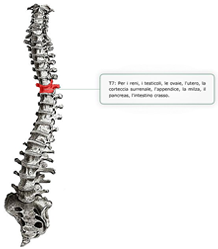Vitamin F
VITAMIN F
Vitamin F refers to Essential Fatty Acids (EFAs). When fatty acids were discovered in 1923, they were designated "vitamin F" but by 1929 research had shown that they were better classified as fats, rather than as vitamins.
What are Essential Fatty Acids?
Fatty acids are part of the lipids that are derived from food. We use fatty acids for energy. Our bodies can make fatty acids; however, we cannot make Essential Fatty Acids. This is why they are called essential, because we must ingest them in order to survive.
What are the functions of Essential Fatty Acids?
EFAs are vital components of neurological functioning, cell membrane stability, regulation of inflammation, immune response, and cardiovascular health.
What health conditions are associated with Essential Fatty Acids deficiency?
- acne and other skin conditions
- numbness and tingling
- shooting pains
- cramping
- arthritis
- allergies
- bursitis
- menstrual difficulties
- irritable bowel
- fatigue
- sleep disturbances
- depression / anxiety
- easy bruising
- hot flashes
- obesity
What are Omega 3 and Omega 6 essential fatty acids?
EFAs are separated into two families based on their molecular structure: Omega 3 and Omega 6. Food sources of Omega 3 EFAs include cold water fish, flax seeds, green leafy vegetables, free range eggs, sprouts, and walnuts.
Food sources of Omega 6 EFAs include refined vegetable oils (corn, safflower, peanut, etc.), meat protein, dairy, nuts, and grains.
Why do so many people supplement with Omega 3?
Even though we require less Omega 3 than Omega 6 (approximately 4:1 ratio), most Americans consume too much Omega 6 and not enough Omega 3.
Can Applied Kinesiology help to determine whether I have a deficiency in Essential Fatty Acids?
Yes. EFAs have such a strong impact on overall health, and it is therefore difficult to pinpoint a deficiency based on symptoms alone. In Applied Kinesiology, we use screening tests to uncover inflammation and fatty acid imbalances, then supplement accordingly.

 SCHEDULE AN APPOINTMENT
SCHEDULE AN APPOINTMENT









